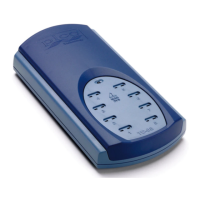USB TC-08 Help
9
© 2005 Pico Technology Limited. All rights reserved.
USBTC08044-2
2.2
How a thermocouple works
A discovery by T. J. Seebeck almost 150 years ago opened the way for modern
thermoelectric circuitry. In 1831, Seebeck discovered that an electric current flows in a
closed circuit of two dissimilar metals when one of the two junctions is heated with respect
In such a thermocouple circuit the current continues to flow as long as the two junctions
are at different temperatures. The magnitude and direction of the current is a function of
the temperature difference between the junctions and of the thermal properties of the
metals used in the circuit. This phenomenon is known as the Seebeck Effect.
The conductors can be made of any two dissimilar metals, and when the hot junction is
heated the current flow can be observed. If the positions of the hot and cold junctions are
reversed, current flows in the opposite direction.
In fact, a thermocouple circuit actually generates a measurable, low voltage output that is
almost directly proportional to the temperature difference between the hot junction and
the cold junction. A change in this temperature difference produces some net change in
Note: More information on choosing and using thermocouples can be found
at this page on our website

